Have you gone to look for a new muzzle device and become lost in the endless number of choices and types of devices out there? To say there are a lot of choices is a huge understatement. There are a lot of attachments that go on the end of rifle barrels that all use different names. Flash suppressors, flash hiders, muzzle breaks, etc. Have you ever wondered what the difference is and which one you should be using?
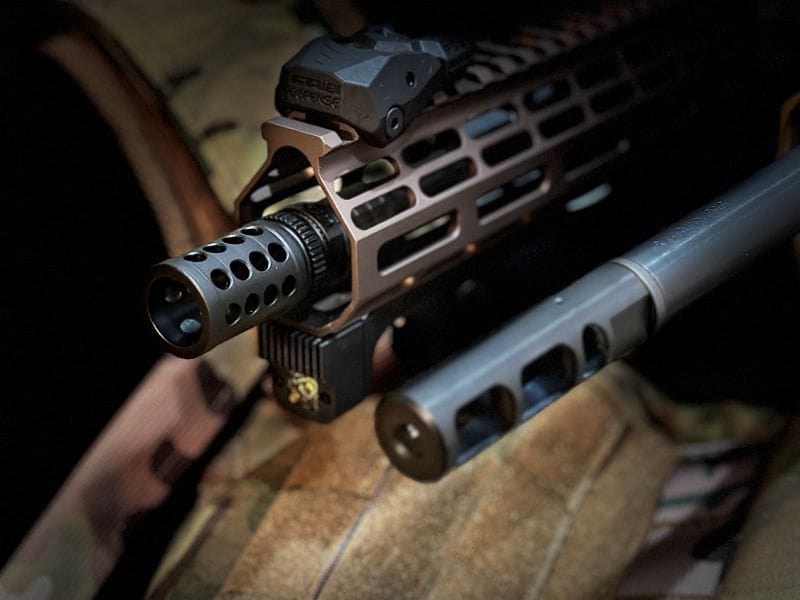
When you shoot a rifle, sometimes there is a bright flash that comes from the end called a muzzle flash. It is caused by the rapid expansion of hot gases created by burning gunpowder. The size and intensity of a muzzle flash are determined by several factors. These include the type of ammunition, the length of the barrel, and the device attached to the muzzle (such as a muzzle brake or flash suppressor). The type and purpose of the weapon will dictate what kind of muzzle device you need.
Let’s discuss muzzle flash and then the types of devices that can help with it.
What is muzzle flash?
Sometimes muzzle flash isn’t noticed during the day. But it can be blinding for shooters in low light conditions, as its bright beam of energy passes in front of their eyes. If someone experiences flash blindness because of this, they will not be able to continue shooting for a while. This is not a good thing during self-defense situations. Another important point to note is that muzzle flashes appear differently on different guns. The shape of a firearm’s muzzle can influence how it appears and affect your sight picture.
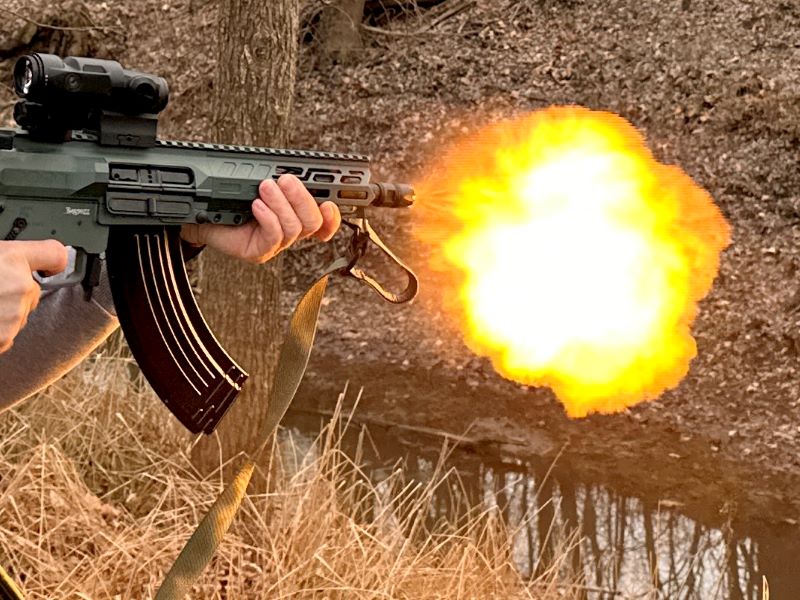
Muzzle flashes come in two flavors: primary and secondary.
A primary muzzle flash is a reddish glow produced by superheated gases that have leaked past the projectile as it exited the barrel before impact. These gases are hot enough to emit significant visible radiation but cool rapidly afterward.
Secondary muzzle flashes are caused by shock waves generated when gases that have not combusted mix with oxygen. This flash looks like a yellow fireball and is further away from the barrel than a primary flash.
Types of Muzzle Devices
Some muzzle devices like a flash suppressor or flash hider can help reduce the flash. Muzzle breaks help with muzzle rise and recoil. Let’s talk about the flash suppressor first.
Flash Hiders / Flash Suppressors
Flash hiders, also known as flash suppressors, are devices designed to reduce the visible muzzle flash when a rifle or pistol is fired. The helps reduce the chance of blinding from gunshot flashes in low-lighting conditions. This makes them especially helpful for hunters and home defense scenarios.
Contrary to popular belief, flash suppressors are not muzzle brakes. Muzzle brakes help by improving follow-up shots, accuracy, and speed while decreasing recoil. We will talk more about those shortly.
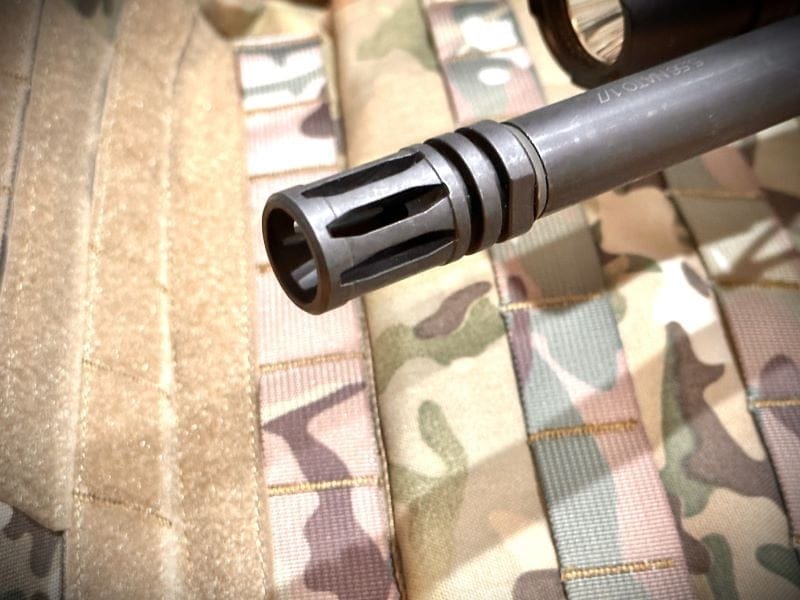
Flash hiders work by cooling or dispersing propellant gases as they exit the muzzle. Most flash suppressors function by creating small, evenly-spaced holes. These holes disrupt the flow of propellant gases as they exit through the muzzle. These openings are intended to mix hot gases with cooler air in an unpredictable pattern. This can reduce or eliminate the bright bubble of light produced when a barrel fires.
Flash hiders come in several shapes and sizes. Some are designed to function as a flash hider and muzzle brake. So, let’s talk about muzzle breaks and see what they are for.
Muzzle brakes and Compensators
A muzzle brake is a device threaded onto the muzzle end of your rifle that helps reduce recoil. It does this by directing gases in specific directions. This reduces the amount of felt recoil for the shooter. While the design and construction of these muzzle brakes can differ, most are either designed to port gas left, right, or direct it upward.
A compensator is somewhat the same thing but focuses a little more on the muzzle rise. Muzzle brakes were first employed on artillery and anti-tank guns during World War II but can also be found on some modern platforms today.
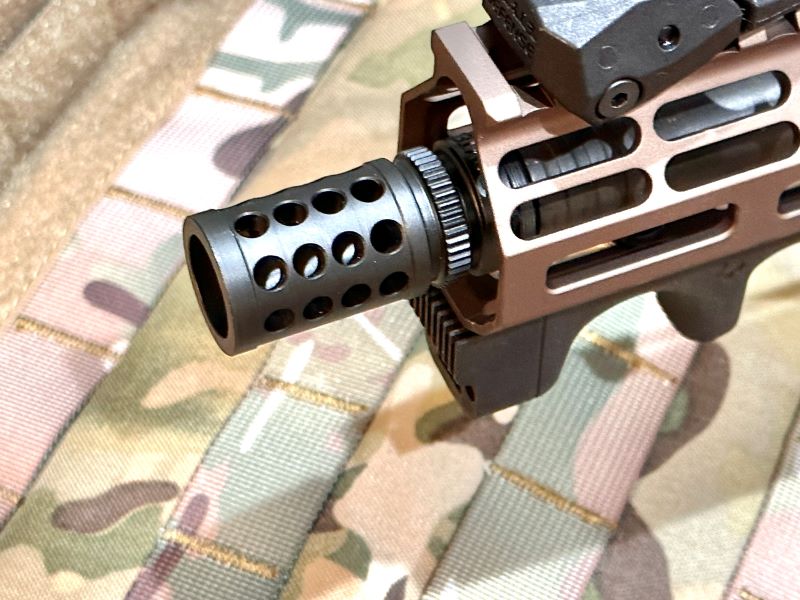
Now a common attachment for many guns, muzzle breaks were originally developed as a safety measure for use with high-powered rifle cartridges that generate lots of felt recoil. This included .50 caliber for big game hunting or 308 Winchester and 30-06. Nowadays, however, these safety devices come in an almost unlimited selection of calibers and can be mounted on nearly any type of firearm.
A muzzle compensator is often referred to as a muzzle brake and some use the terms interchangeably. There is a little difference because they reduce muzzle rise more than recoil. It is mostly used on rifles that produce large amounts of recoil, but it can also be used on pistols for practical competition shooting. In recent years, pistol compensators have started to grow like wildfire in popularity. Some models like the Springfield Hellcat and Kimber Micro 9 are sold with a compensator. A muzzle break can help reduce muzzle rise, but not to the extent of a compensator.
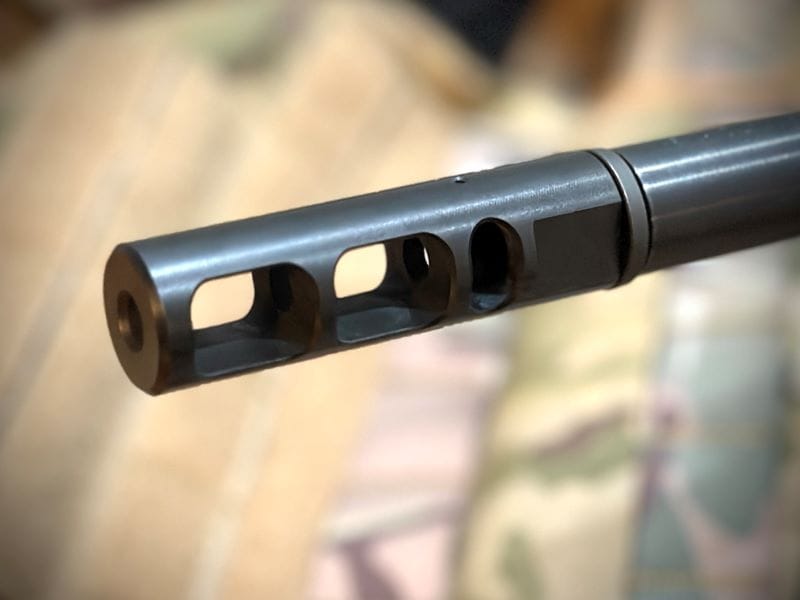
Muzzle Devices — Summary
“Muzzle device” is a generic name for anything that threads on the end of the barrel (muzzle). The type of muzzle device you choose will depend on what you need from the gun. If you have an AR-15 that shoots well but produces muzzle flash and that is your main concern, a standard mil-spec A2 flash hider may work just fine. There are more expensive flash hiders that work even better if you want to spend more money.
If you are having issues with muzzle rise when you shoot, a compensator may be the best option. If your goal is to reduce recoil and help with muzzle rise at the same time, there are several muzzle brakes that are designed for this too. The caliber of your gun and the length of barrel may help determine what device you need. They are easy to install and most of the time can be done with a simple wrench and a vice to hold the gun still during installation.


